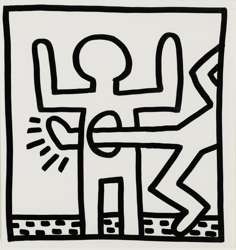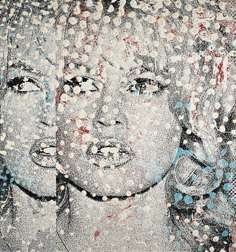
K-pop’s T.O.P. has been a collector since he was 4 years old
Big Bang star who’s curating Sotheby’s Hong Kong contemporary art sale in October started collecting Lego, then sneakers, designer furniture and art, especially contemporary German works
Sotheby’s has put one of Asia’s biggest pop stars in charge of a contemporary art auction in Hong Kong, a move guaranteed to get more than a few screaming fans to attend its October sales. In fact, the auction house is so blatantly tapping the appeal of T.O.P. (real name Choi Seung-hyun) that it has named the October 3 sale #TTTOP, after the Big Bang star’s Instagram handle. All 5.5 million of his followers will see every single update about the sale.

In an interview with Post Magazine , Choi says he has always been a compulsive collector.
“I started collecting when I was four years old. Lego blocks to begin with and, later, sneakers. I was an anxious child and seeing lots of things with similar forms calmed me. When I was 18 and started earning money from the band, I began to collect designer furniture because I found the architectural beauty of the lines to be healing. And then I discovered art,” he says, through a translator.
He says his taste reflects what young Asian collectors like. Nationality counts for little. He collects blue-chip names as well as emerging artists such as Tomoo Gokita, Jina Park and He Xiangyu, who are all featured in the sale, alongside artists such as Kim Whan-ki, Park Seo-bo, Lee Ufan, Chung Sanghwa and Nam June Paik.

“My criteria are simple: an artwork should always be original, beautiful and conceptually convincing. I particularly like German artists. There’s something really cutting edge about German art that can’t be found elsewhere. And I think that, as a Korean, I can relate to Germany’s history, the fact that it used to be divided into east and west,” he says.
There’s a Gerhard Richter – Abstraktes Bild (1998), with an estimated value of HK$8 million to HK$12 million – among the 25 lots. Another favourite is an Italian working in New York.
“I think [Rudolf] Stingel is one of the most important living artists. He is always pushing the boundaries, surveying the idea of traditional authorship in art and being so original with new concepts. Aesthetically, I find his works very beautiful,” says Choi, adding that he has a Stingel work in his personal collection.
But what does he mean by beautiful? The pop star points to one Korean work included in the sale: Nam June Paik’s Fat Boy (1997), a robot made out of seven television sets showing videos.
“It’s one of the best things I’ve ever seen. I cannot not like it,” he says. The beauty lies in the fact that it is original, monumental and yet perfectly “tidy”. “Nothing about it is too much. There is no excess. The shapes and sizes of the TV screens are very calculated.”
Choi has also included works by American artists, such as Keith Haring’s untitled set of 23 drawings from the collection of David LaChapelle and an oil painting by Jonas Wood.

Preparation work for the sale started a year ago, according to Yuki Terase, Sotheby’s specialist in contemporary art. Choi initially gave her a list of artists and her team went around looking for available works. He had to approve each piece going into the sale and he rejected a number of works he felt were not representative of why he liked that particular artist. In theory, all 25 lots are ones that Choi the collector would love to own.
“I may bid for a couple of pieces but I don’t have enough money to buy them all,” he says.
This doubling of the roles – curator and collector – is just one reason why this particular Sotheby’s sale is seen as pushing the boundaries of how auction houses operate.
An as-yet unspecified portion of the sale’s proceeds will go to the Asian Cultural Council (ACC), to finance exchange programmes for emerging artists in Asia and the United States. One of the initiative’s beneficiaries, Japan’s Kohei Nawa, has produced a work specifically to be included in the sale – a gimmicky piece called PixCell T.O.P.(DOOM DADA).

Ma and Zeng made a joint painting of the Earth, called Paradise, and sold it for a staggering HK$42 million in aid of Ma’s environmental charity. Critics complained that it distorted the market and gave a boost to Sotheby’s auctions tally.
Yusaku Maezawa, the Japanese collector who hit the headlines in May when he bought a Jean-Michel Basquiat painting for US$57.3 million, is again going to raise eyebrows by placing another Basquiat in Choi’s sale.
Maezawa risks being seen as a short-term speculator by selling Infantry (1983) just two years after buying it at a Christie’s auction.
Terase explains, however, that Maezawa and Choi are close friends and the Korean star convinced the collector to part with the piece because it fitted so well into a sale associated with Big Bang, the band – the words “Boom” and “Bang” appearing on the painting.
[email protected]
Sotheby’s autumn auctions will be held from October 1 to 5 in the New Wing of the Hong Kong Convention and Exhibition Centre.

